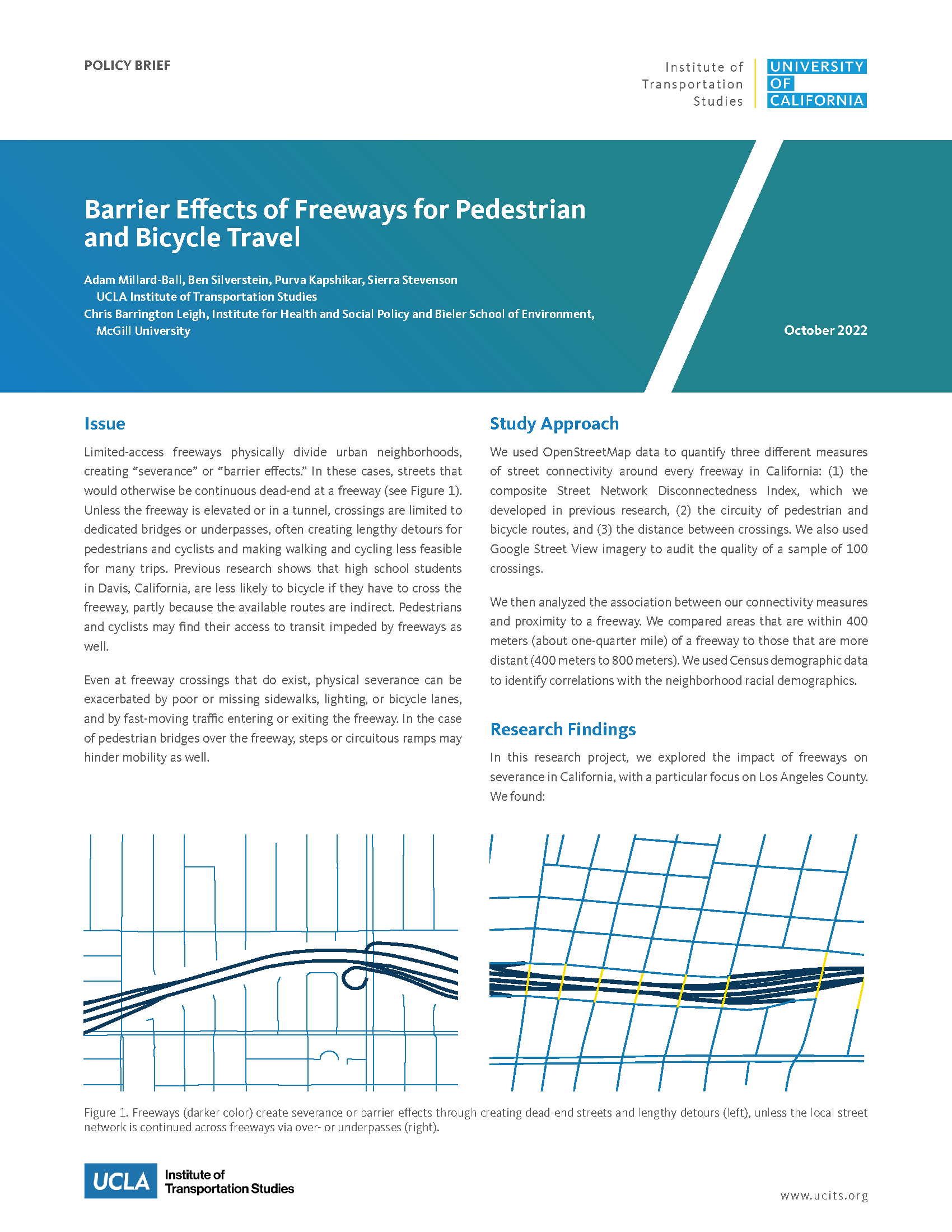Date: November 7, 2022
Author(s): Adam Millard-Ball, Benjamin Silverstein, Sierra Stevenson, Chris Barrington-Leigh
Abstract
Limited-access freeways physically divide urban neighborhoods, creating “severance” or “barrier effects.” In these cases, streets that would otherwise be continuous dead-end at a freeway. Unless the freeway is elevated or in a tunnel, crossings are limited to dedicated bridges or underpasses, often creating lengthy detours for pedestrians and cyclists and making walking and cycling less feasible for many trips.
About the Project
The racist legacy of freeways has come into stark focus in the past year. This research focuses on one specific impact of freeways: neighborhood severance. Freeways disrupt the neighborhood street grid, creating particular hardships for pedestrians who must take circuitous routes to access transit and to walk to stores, schools, and other destinations. The impacts of disconnected streets on walking and public health are well documented (e.g. Handy 2003; Marshall et al. 2014; Barrington-Leigh and Millard-Ball 2019). But the environmental justice dimension of connectivity has remained unexplored, as has the link between most academic studies of street connectivity and local planning efforts. The research team will test the hypothesis that, while freeways disrupt street networks everywhere, the severance effects are greatest in BIPOC communities. This injustice might arise if White residents have more political voice to advocate for a denser mesh of local streets that cross the freeway, or to cancel a freeway proposal altogether.


